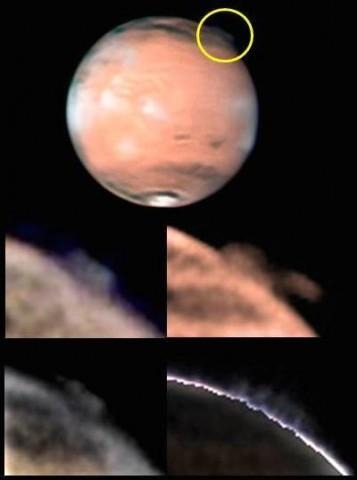What Are These Weird Mars Clouds? Stargazers Aren't Sure
A huge plume of haze extending more than 600 miles from the surface of Mars has stumped astronomers, with the cause of the unexpected extrusion still the cause of fierce speculation. Spotted for the first time in 2012, the high-altitude emissions were first tracked by amateurs who initially doubted their telescopes, so different from the usual clouds and aurora they were. Now, researchers from the European Space Agency have waded in, but while they may have far stronger telescopes (not to mention a bigger budget), they're still stuck at the theorizing stage.
Odd events above the Martian equator aren't new in and of themselves. Ice crystal clouds – made up of either water or carbon dioxide – have been spotted on many occasions, while similar formations of suspended dust have also been tracked.
Less physical, but no less striking, auroral emissions from magnetic field changes can also stretch out above the Martian atmosphere.
However, none of those naturally-occurring events have shown the same range as these new and mysterious plumes, Antonio Garcia Munoz of the ESA team responsible for a new paper published in the journal Nature points out.

The first sighting came in March 2012, with a huge haze extending from a longitude of around 195-degree west, and lasting for approximately ten days. It reappeared roughly a month later, again lasting for more than a week.
While confirmed by the ESA's scientists, it has since gone unobserved.
For the moment, all we have are theories as to its origins. Clouds seem unlikely, given the altitudes the plumes have been seen at, while it would take a huge increase in auroral power to explain the increase in size and range were magnetic field anomalies in Mars' crust responsible.
"Importantly," the study concedes, "both explanations defy our current understanding of Mars' upper atmosphere."
The hope now is that the emission re-occurs, and preferably while instruments like the Mars Reconnaissance Orbiter – which recently solved another mystery, the location of a Martian rover missing for a decade – are paying attention.
VIA BBC
SOURCE Nature
